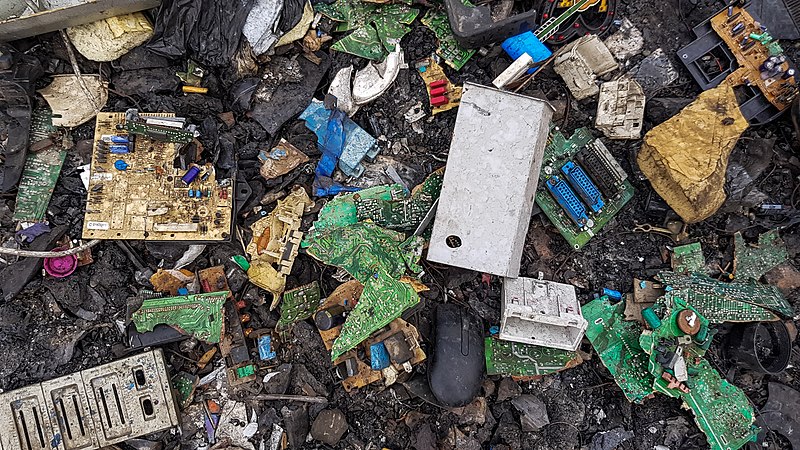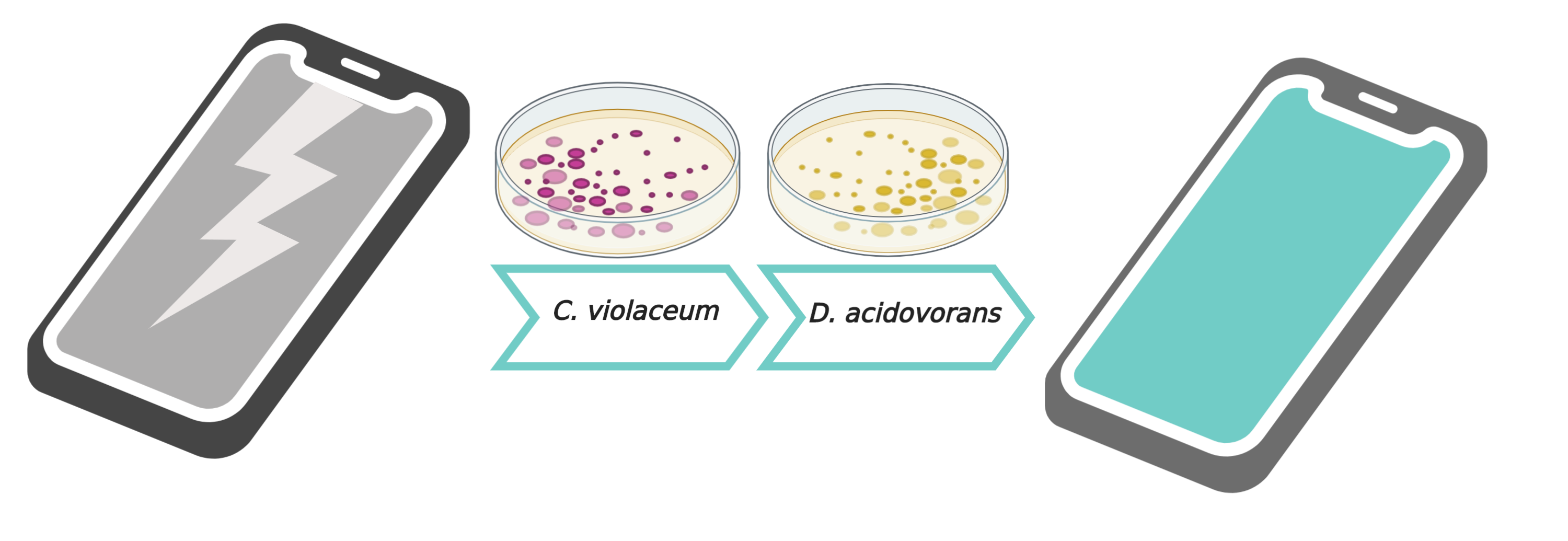Every year up to 50 million tons of electronics are discarded. Only 12% are properly recycled (source).
Although recycling is feasible, current methods are costly and energy-intensive. Lacking a proper way to dispose of electronics, we face an ever-growing mountain of e-waste associated problems.

The difficulty with recycling e-waste originates in the myriad of the materials within. Plastics, mercury, platinum, silver and gold–some of these are valuable, however, separation and refinement have proved difficult. But, there may lie a solution, using the targeted precision of metallophore microbes.
Certain bacteria like Chromobacterium violaceum produce acidic compounds that break down and dissolve metals. Then, biomineralizing bacteria like Delftia acidovorans precipitate the metals into pure, solid forms that can easily be recovered and reused.

Help us learn about Delftia‘s ability to recycle e-waste. Join the conversation and start annotating here. Annotate on relevant literature using Hypothes.is, and tag your annotations with gold biomineralization and e-waste.
Here’s some articles to get you started, but annotate anything you find relevant.
- 2013 iGEM project: Using delftibactin to recycle gold from electronic waste
- Bio-extraction of precious metals from urban solid waste
- How bacteria could help recycle electronic waste
Check back soon to see what we learn!